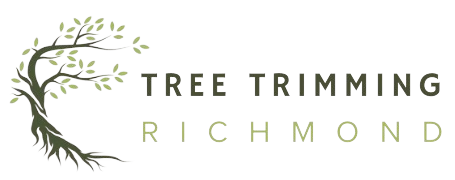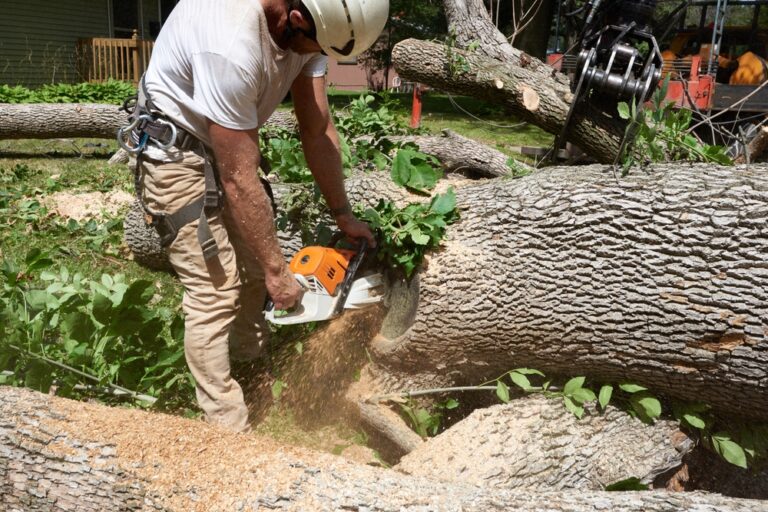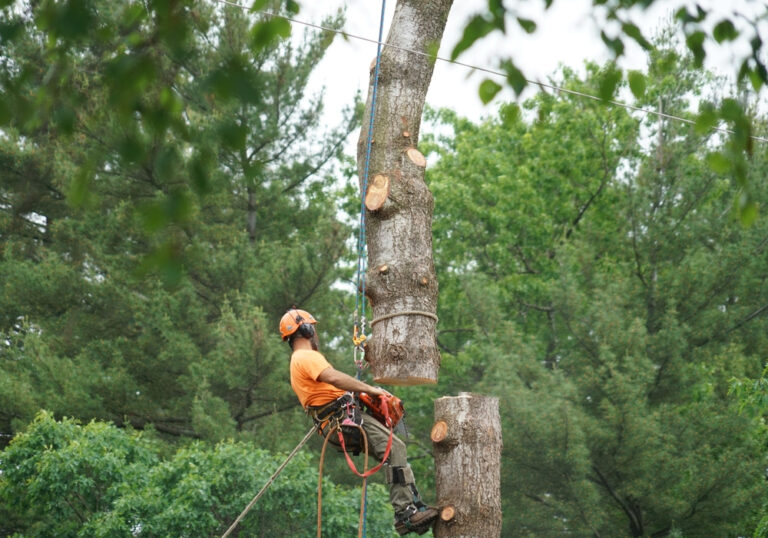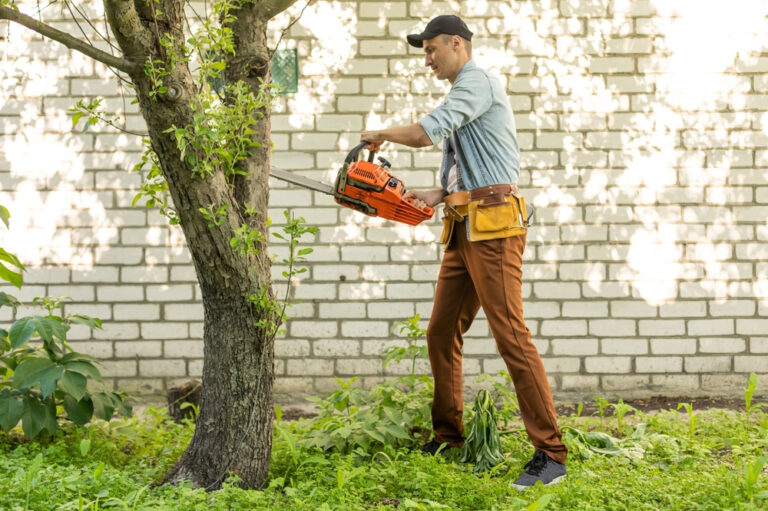When to Call for Emergency Tree Removal in Richmond, VA
Properties are enhanced by trees, which provide shade, attractiveness, and value. Nevertheless, the advantages of trees can rapidly transform into substantial hazards when specific circumstances arise. Occasionally, it is necessary to remove a tree in order to safeguard your property, family, or community. Understanding when to contact emergency tree removal in Richmond VA, where lush landscapes intersect with frequent storms and high gusts. This guide provides comprehensive information on the identification of hazardous tree conditions, the effects of weather, legal considerations, and the selection of the appropriate emergency service for your requirements.
1. Recognizing Hazardous Tree Conditions
Trees that appear to be in good health may still harbor concealed hazards. Trees can be silently weakened by structural issues, diseases, or decay, resulting in the development of significant hazards. Early identification of these indicators is beneficial in averting accidents. We will examine specific indicators that may suggest potential tree emergencies:
- Leaning or Tilting Trees: A tree that is in good health typically develops in an upright position, with a stable root system that secures it to the soil. If you observe that a tree on your property is leaning, it may indicate structural instability, soil erosion, or root damage. Trees that exhibit a sharp lean, particularly following storms, are frequently susceptible to collapsing. It is possible to prevent unexpected property damage or injury by contacting an arborist to evaluate and potentially remove a leaning tree.
- Cracks in the Trunk: The principal support for a tree’s branches and leaves is provided by its trunk. The presence of substantial fractures or splits in the trunk indicates that the tree may be experiencing difficulty in supporting its own weight. The structure is weakened and the fractures deepen as time passes. Emergency removal is a safe and proactive decision, as trees with substantial cracks are more susceptible to falling during powerful winds or storms.
- Damaged or Exposed Roots: A tree’s foundation is its roots. The stability of a tree is compromised by exposed, damaged, or rotting roots, which render it susceptible to collapsing over. Root damage may result from intense rainfall, landscaping activities, or soil erosion. If the roots are exposed or appear to be decaying, it is recommended that you contact a professional tree service to evaluate the risk. Even mild winds can cause trees with compromised root systems to collapse.
- Dead or Decaying Wood: A tree is in poor condition if it has dead branches and decaying wood. Dead wood does not deform; it fractures, in contrast to live wood. The unpredictable shedding of limbs by trees with decaying wood poses a threat to the safety of individuals, property, and adjacent structures. High winds may also result in the sudden fall of dead branches.
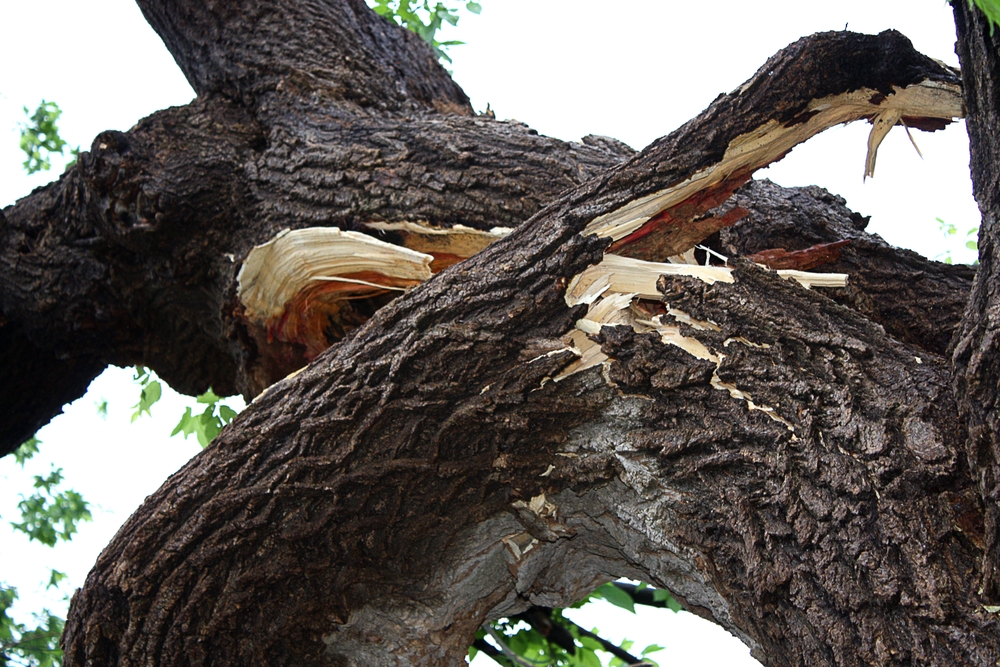
2. Tree Risks After Severe Weather Events
Richmond, VA, is frequently subjected to severe thunderstorms, hurricanes, and high winds. The integrity of a tree can be compromised by severe weather, and post-storm assessments are essential to guarantee safety. The following is a list of the signs to look for after a typhoon and how weather affects trees:
- Signs of Storm Damage: Upon the conclusion of a storm, inspect the trunk for cracks, exposed roots, and fractured branches. These issues can erode the tree over time, resulting in sudden collapse, even if the damage appears to be minor.
- Uprooted or Partially Uprooted Trees: Trees can be partially uprooted from the soil by strong gusts. Trees that have been partially uprooted are unstable and hazardous, as they may remain erect but are susceptible to falling without warning. In order to avert an unforeseen catastrophe, it is imperative to promptly remove trees.
- Hanging Limbs and Broken Branches: Branches may shatter during storms, but they may remain affixed to the tree, resulting in their precarious suspension. These hanging branches, which are referred to as “widowmakers,” have the potential to collapse without warning, posing a threat to anyone in the vicinity. Potential injuries can be prevented by the emergency removal of widowmakers.
- Splits in the Tree Trunk: Trees may develop splits or breaks along their trunks during periods of intense wind. The structural integrity of a tree is significantly compromised when a tree trunk separates. In order to prevent the tree from falling and causing potential injury, it is imperative that it be removed immediately.
3. Trees Growing Close to Power Lines
Not only are trees that grow in close proximity to power lines a safety hazard to your property, but they also pose a substantial risk to the entire neighborhood. Power outages, fires, and even electrocution risks can result when tree branches collide with power lines during storms or intense winds. The appropriate time to contact emergency tree removal services for trees in close proximity to power lines is as follows:
- Branches Entangled with Power Lines: Branches that are in contact with or entangled with power lines can disrupt electricity, cause flames, and pose a public safety hazard. Immediately contact a professional tree removal service if you observe branches that are in close proximity to power lines. They possess the necessary equipment and expertise to remove trees in a secure manner without disrupting power lines.
- Trees Leaning Towards Power Lines: Leaning trees in close proximity to power lines pose a potential hazard, particularly during periods of inclement weather. It is advisable to contact emergency removal services if you observe a tree that is leaning toward a power line. Extended power disruptions and even fires may result from leaning trees that collide with power lines.
- Trees with Branches Above Utility Poles: Large trees with branches that extend above utility poles are problematic due to the potential for high gusts to cause the branches to fall on utility infrastructure. Preventative removal of these branches or trees can prevent issues, particularly in regions that are susceptible to cyclones, such as Richmond.
4. Rapid Decay and Disease
The rapid decay caused by certain diseases or fungi can substantially weaken the structure of certain trees. In Virginia, tree species are particularly susceptible to fungi and insects that propagate decomposition, thereby eroding the tree’s internal structure. Here is a method for identifying the indications of decomposition and disease that may necessitate immediate removal:
- Fungal Growth at the Base: Internal decay is indicated by fungi, such as mushrooms that grow at the root of a tree. The tree’s risk of collapsing is increased by the rapid progression of this decay, which can destabilize it. Fungi can be particularly hazardous because they indicate that the tree’s interior may be compromised.
- Peeling or Crumbling Bark: Trees that are in good health possess robust bark that safeguards them from parasites and disease. The tree’s structure is weakened and the likelihood of collapse is increased by the presence of peeling bark or crumbling wood, which indicate that the tree is either deceased or dying. The prevention of unforeseen catastrophes can be achieved by removing a tree with damaged tree bark.
- Insect Infestations: Decaying or compromised trees are the target of specific insects, such as termites and bark beetles. If you observe an insect infestation, it is typically indicative of a tree that is experiencing difficulty and necessitates immediate evaluation. The tree’s integrity is compromised by infestations, which render it a safety hazard on the property.
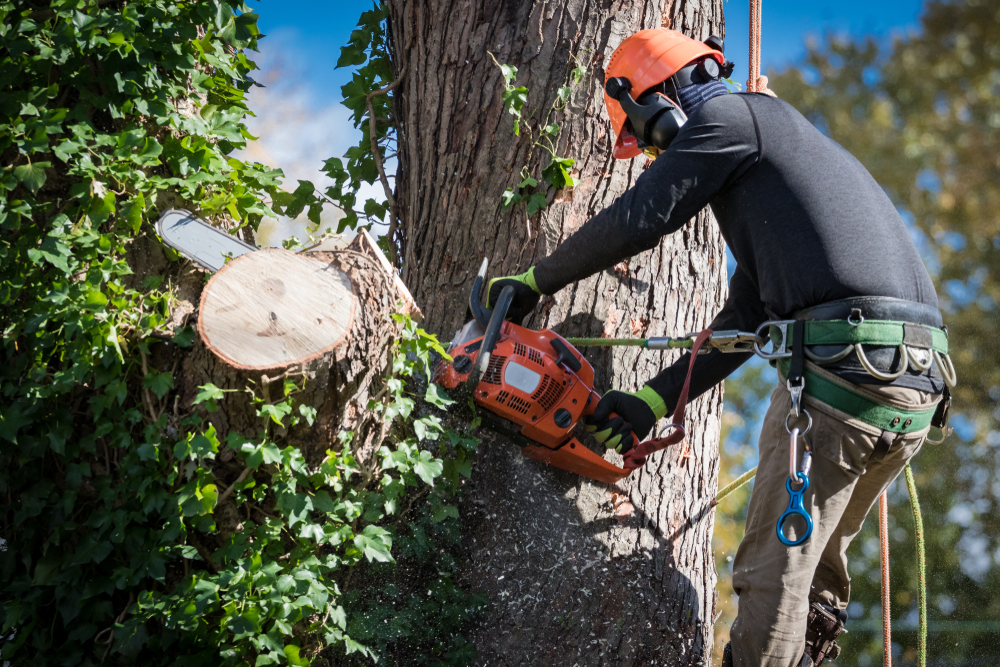
5. Trees Threatening Buildings, Vehicles, and Walkways
If a tree falls in close proximity to buildings, parking areas, or high-traffic walkways, it can cause significant damage. Richmond, VA, is renowned for its urban areas, which are characterized by the presence of large, mature trees that are frequently situated in close proximity to residences and businesses. To prevent costly damage, it is important to consider the following warning signs when a tree is located in close proximity to valuable assets:
- Branches Hanging Over Buildings: A potential hazard is posed by large branches that are dangling over your roof or garage. The structure may be damaged and individuals in the vicinity may be at risk of injury if these branches fall during high winds. Your property can be safeguarded by the emergency removal of overhanging branches.
- Trees Near Driveways or Pathways: Potential hazards may arise when large branches are suspended over your garage or roof. These branches may collapse in the event of intense winds, which could result in structural damage and a potential threat to those in the vicinity. The protection of your property can be achieved by the emergency removal of overhanging branches.
- Overgrown Roots Near Foundations: Tree roots have the potential to expand underground, resulting in foundation damage, perforating sidewalks, or even reaching underground infrastructure. Removing a tree may be the most cost-effective solution to prevent costly repairs if its roots are expanding in close proximity to structures.
6. Legal Considerations for Hazardous Trees
Property owners in Virginia are accountable for the preservation of secure conditions on their property. Neglecting a hazardous tree may result in legal liability if it causes injury or damage. These potential legal issues can be mitigated through emergency tree removal. Legal considerations for landowners include the following:
- Trees Threatening a Neighbor’s Property: In the event that your tree is leaning toward a neighbor’s property or has branches that extend over their property, you are responsible for any resulting damage. The tree’s removal mitigates the risk of property disputes and the necessity for costly restorations in the event of its collapse.
- Trees in Public Spaces or Near Sidewalks: Local ordinances frequently apply to trees that are situated in close proximity to public spaces, including sidewalks, parks, and roads. Failure to remove a hazardous tree in close proximity to public areas may result in legal difficulties or penalties if it causes an accident.
- Insurance Implications: Certain householders’ insurance policies provide coverage for tree damage; however, neglecting a hazardous tree may result in the cancellation of coverage. It is crucial to conduct routine inspections and removals of hazardous trees to guarantee coverage in the event of an accident.
7. Emergency Tree Removal Process
It is imperative to take prompt and effective action when confronted with a tree emergency. The procedure for an emergency tree removal is as follows:
- Initial Risk Assessment: The tree is initially inspected by a tree removal professional, who evaluates its condition, location, and immediate hazards. Then, they develop a safe eradication plan in accordance with the results of this evaluation.
- Securing the Area: Professionals establish barriers or signs to ensure the safety of individuals, pets, and property during the removal procedure.
- Controlled Removal: Tree removal professionals meticulously remove the tree by employing specialized equipment, including cranes, harnesses, and cables. This method reduces the risk of damage to adjacent structures.
- Debris Cleanup: The team ensures that your property is left in a safe and orderly state by clearing away branches, wood, and other detritus after the tree is removed.
8. Choosing the Right Emergency Tree Removal Service in Richmond, VA
It is imperative to select a reputable tree removal company in order to ensure that the service is both safe and effective. Look for the following qualities in a reputable tree removal provider:
- Certified, Licensed, and Insured Professionals: Confirm that the organization maintains licenses, insurance, and certifications. This safeguards you in the event of an accident.
- Experience in Emergency Tree Removal: Not all tree services are equipped to manage emergencies. Select a company that has a demonstrated history of emergency tree removal, as they possess the necessary expertise to respond promptly and safely.
- Access to Specialized Equipment: Cranes, climbing apparatus, and drones are frequently necessary for the safe operation of emergency removals. Select a company that is well-equipped to handle intricate removals.
- 24/7 Availability: Tree emergencies can occur at any time. Select a company that provides round-the-clock service to address urgent matters, ensuring your safety at any hour of the day.
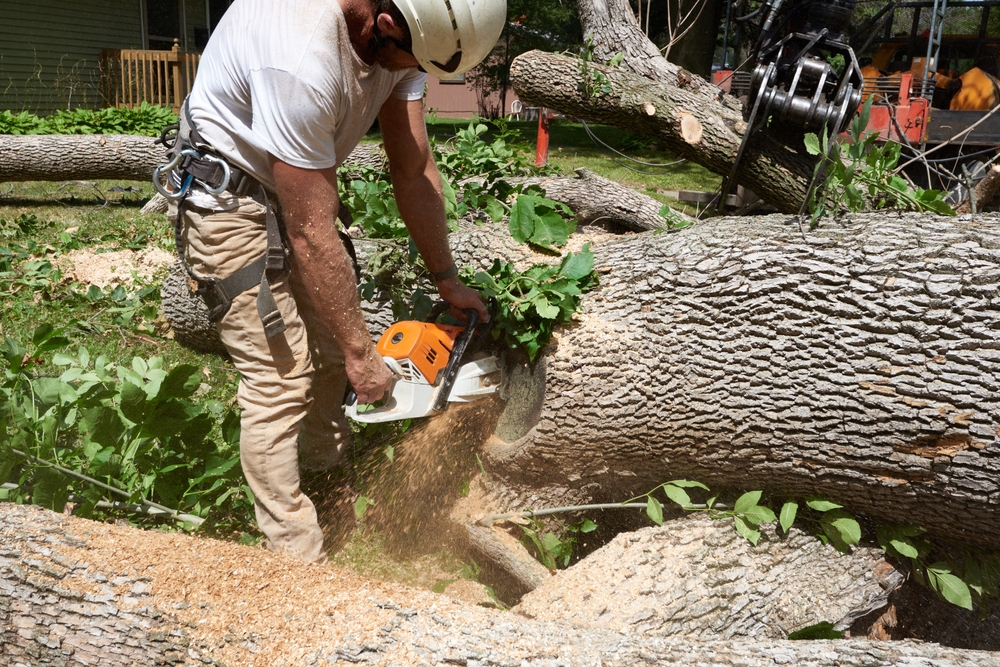
9. Proactive Tree Maintenance to Avoid Emergencies
Routine maintenance is essential for the prevention of tree emergencies. Regular inspections and professional tree care are essential for the preservation of healthy trees, which in turn reduces their likelihood of causing hazards. The following are some indispensable maintenance procedures:
- Annual Tree Pruning: The tree’s structure is fortified by pruning, which involves the removal of weak or deceased branches. Trees that are properly pruned are more resistant to high gusts.
- Routine Health Checks: Hiring an arborist to conduct an inspection of your trees can identify early indications of decay or disease. Emergency situations are mitigated through early detection.
- Mulching and Proper Watering: Tree roots are fortified by regular watering and healthy soil, which decreases the probability of uprooting during cyclones.
- Pest and Fungal Treatments: The health and stability of a tree can be preserved by the early treatment of parasites or fungi, which can prevent decay.
10. Recognizing Signs of a Healthy Tree
Achieving an understanding of the appearance of a thriving tree can assist in the early detection of potential issues. Trees that are in good health exhibit specific characteristics, such as:
- Green, Vibrant Leaves: The health of a tree is significantly influenced by the presence of robust, green foliage. Sudden changes, such as the dropping of foliage or the appearance of brown, indicate the presence of problems.
- Thick, Solid Bark: The health of a tree is significantly influenced by the presence of robust, green foliage. Sudden changes, such as the dropping of foliage or the appearance of brown, indicate the presence of problems.
- Balanced Growth: Stable root systems are exhibited by trees that develop upright without leaning or uneven branches. A potential hazard is frequently indicated by uneven growth or imbalance.
Conclusion
When trees present an imminent threat, emergency tree removal is necessary. In order to safeguard individuals and property, trees that are leaning over power lines, structures, or exhibit signs of decomposition must be promptly addressed. Proactive maintenance can prevent numerous emergencies, thereby ensuring the safety of your Richmond property. Working with a certified, experienced tree removal company guarantees the safe and expedient resolution of emergencies.
Preventing costly repairs, injury, and even legal complications can be achieved by comprehending the appropriate time to contact emergency removal services. Acting promptly is crucial for the protection of your property and your tranquility, regardless of whether the cause is storms, decomposition, or proximity to structures.
Tree Trimming Richmond
(804) 533-3943
https://treetrimmingrichmond.com/
